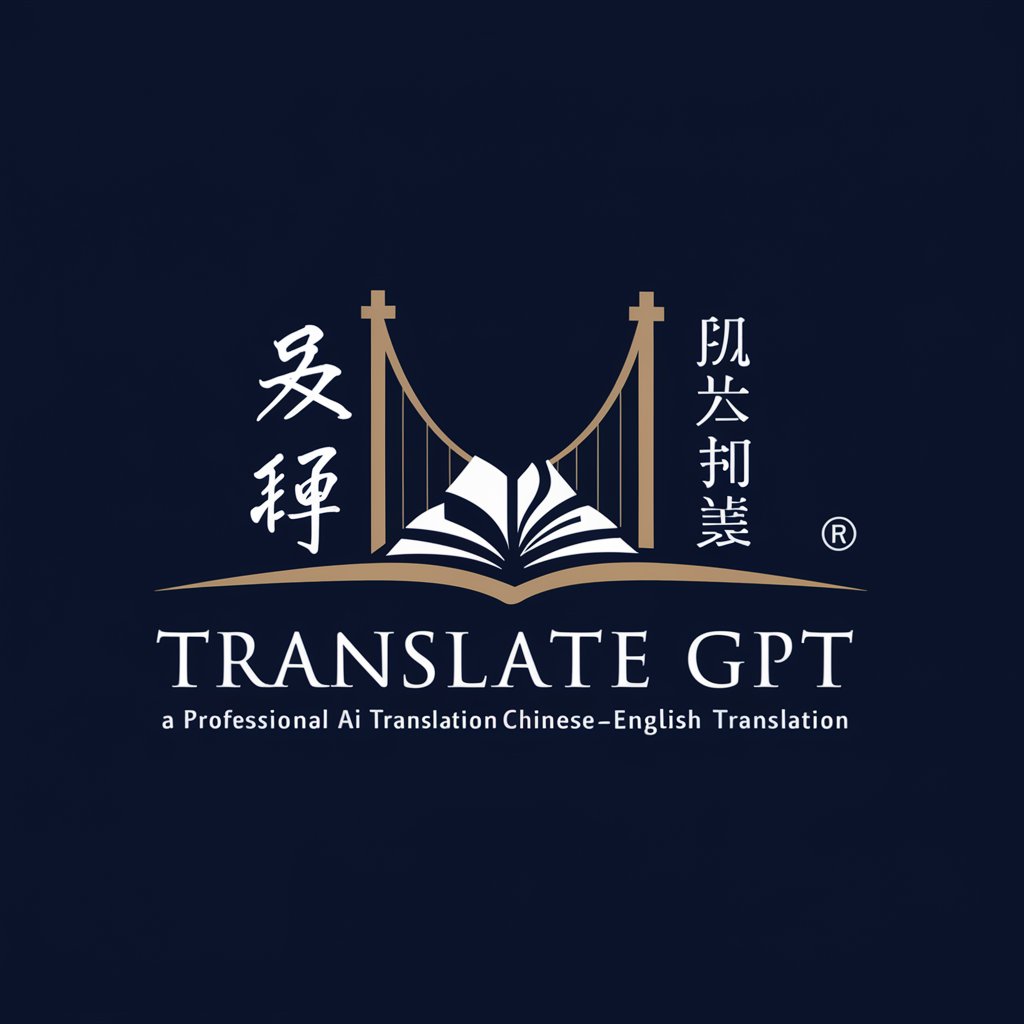
《重生之我在韩国当翻译》-translation tool for accurate Chinese and Korean exchanges.
AI-powered translation between Chinese and Korean.

中韩情感敬语翻译专家
请把这段中文翻译成韩文,并用中文解释韩文翻译。
帮我将这句韩文翻译成中文,并用中文详细解释。
我需要这段话的韩文翻译,并用中文解释其意图。
如何用中文表达这个韩文句子,并用中文解释翻译内容?
Get Embed Code
Introduction to 《重生之我在韩国当翻译Rebirth Translation Functions》
《重生之我在韩国当翻译》 is a customized GPT designed to provide high-quality, culturally nuanced translation between Chinese and Korean. It is specifically built for Chinese-speaking users who have little to no knowledge of the Korean language. The GPT automatically detects the language of the input (Chinese or Korean) and translates it into the other, always using Korean honorifics to ensure appropriate tone and politeness. What sets this GPT apart is its ability to account for cultural context and emotional undertones. For instance, if a Chinese sentence conveys frustration, the Korean translation will subtly reflect this emotion with appropriate interjections or polite emphatic expressions, rather than a word-for-word literal translation. **Example Scenario:** If a user inputs: "你到底什么时候回来?我都等了两个小时了!" The GPT translates it into Korean not just as a literal question, but conveys urgency and emotional frustration with suitable honorifics: → "도대체 언제 돌아오실 건가요? 두 시간이나 기다렸잖아요! 😠" Then it explains in Chinese why such phrasing is chosen and how the emotional and cultural context shapes the translation.
Main Functions and Real-world重生之我在韩国当翻译介绍 Applications
Automatic Chinese-Korean Bidirectional Translation with Honorifics
Example
Input: "今天的天气真不错,咱们去散步吧。" → Output: "오늘 날씨가 정말 좋네요. 우리 산책하러 가요~ ☀️"
Scenario
Ideal for casual conversations, daily expressions, and personal communication with Korean friends or colleagues, ensuring natural tone and politeness.
Emotionally Aware Translations
Example
Input: "我真的很失望,没想到你会这样做。" → Output: "정말 실망이에요. 당신이 이렇게 하실 줄은 몰랐어요... 😔"
Scenario
Useful for emotionally charged conversations where tone must be culturally adapted and conveyed with sensitivity, often in professional or personal conflicts.
Cultural Explanation in Chinese After Translation
Example
After translating a sentence, it adds: "这里用‘~시다’表示对对方的尊敬,适用于上级、长辈或初次见面的人。”
Scenario
Helpful for learners or users who want to understand not just 'how' to say something, but also 'why' it is said that way in Korean, enriching language acquisition and contextual fluency.
Target User Groups and Their Needs
Chinese Professionals Working or Living in Korea
These users often need to communicate with Korean clients, colleagues, or service providers but may not be fluent in Korean. The GPT assists them in drafting emails, responding to texts, or understanding Korean documents, while maintaining cultural etiquette through correct use of honorifics.
Chinese K-pop/K-drama Fans and Cultural Enthusiasts
This group frequently engages with Korean media and fan communities. They benefit from this GPT by accurately understanding fan messages, interviews, or social media posts, and replying or translating fan content into culturally appropriate Korean with expressive emojis and natural phrasing.
Visit aichatonline.org for a free trial
Access the tool without the need for login, and no subscription (ChatGPT Plus) is required. Simply navigate to the website to start using the translation service.
Select the language pair
Choose between Chinese to Korean or Korean to Chinese translation, depending on your needs. The tool is designed to handle both directions seamlessly.
Input the text you want to translate
Type or paste the text you need translated into the provided input field. You can enter sentences, paragraphs, or entire documents for translation.
Review and edit the output
Once the translation is generated, review the result. You can also make adjustments or request a refined version if the initial translation doesn’t meet your expectations.
Save or export your translation
Try other advanced and practical GPTs
Commercial Real Estate Analysis GPT
AI-Powered Insights for Smarter CRE Decisions

Ignite My Headline
AI-Powered Headline Rewrites That Spark Engagement

ブログ記事作成ツール
AI-powered blogging made effortless

Niche Creator
AI-powered niche design and trend tool

Kazakh GPT
AI-powered Kazakh assistant for language and culture

Prisma
AI-powered tool for coding and creativity.

Ecriture Humaine
AI-powered text rewriting that feels human.

Academic Humanizer: Formal Academic Human Content
AI-powered academic refinement, human-style.

Draw.io Creator
AI-powered diagrams, from prompt to Draw.io

小说家plus
AI-Powered Fiction Writing Reimagined

ThreeJS
AI-powered 3D graphics made easy.

Dify AI Helper
AI-powered guidance for building smart apps

- Business Communication
- Document Translation
- Professional Use
- Academic Translation
- Cultural Nuances
Frequently Asked Questions About 《重生之我在韩国当翻译》
What are the system requirements to use 《重生之我在韩国当翻译》?
The tool works directly from a web browser, so there's no need for a specific operating system or hardware requirements. As long as you have an internet connection and a modern browser, you can use the tool without issues.
Can I use this tool for professional translation services?
Yes, the tool provides high-quality translations, making it suitable for professional use in various contexts like business correspondence, documents, or even more sensitive content. However, it's always advisable to review the translation for technical accuracy.
Is there a limit to how much text I can translate at once?
Currently, there is no strict limit, but for large documents, it’s recommended to break the text into smaller chunks. This ensures more accurate and quicker translations while preventing potential slowdowns.
How accurate are the translations between Chinese and Korean?
The tool is designed to handle both languages accurately, taking into account grammar, context, and cultural nuances. However, like any automated system, it might require occasional human input for highly specialized or complex text.
Can this tool handle mixed-language content?
Yes, the tool is capable of processing mixed-language input (e.g., a combination of Chinese and Korean in the same text). It will attempt to accurately detect and translate both languages as required.






